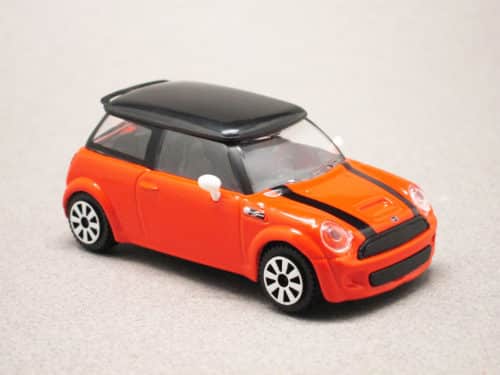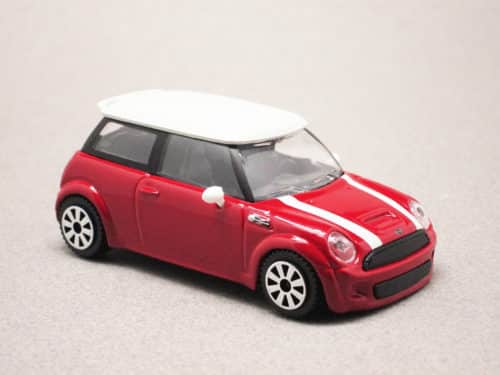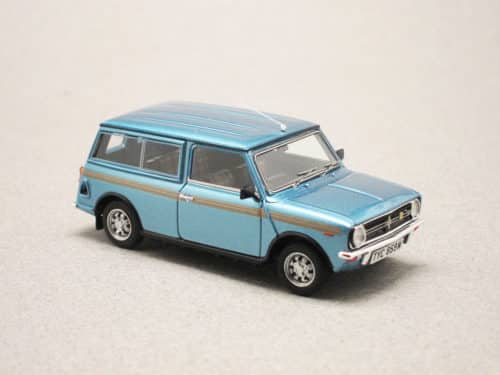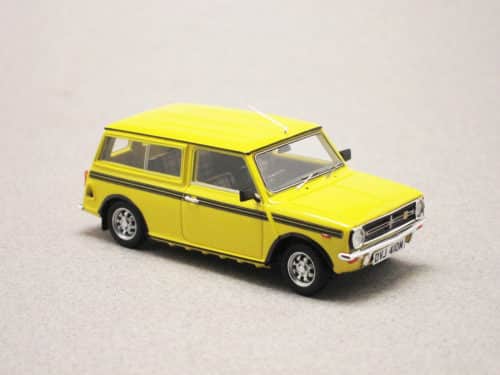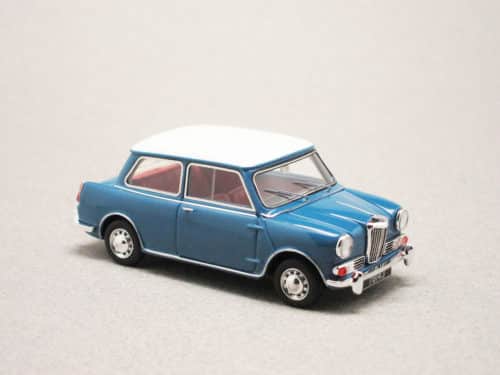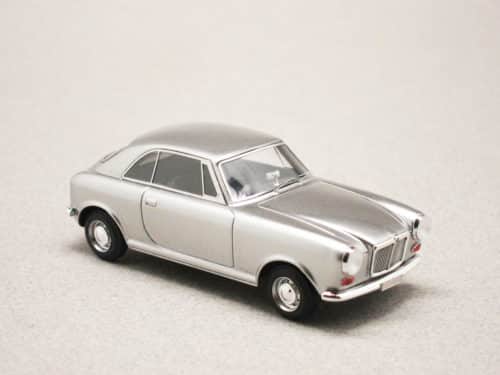Categories
- Uncategorized
- Brands
- Aspark
- Abarth
- AC
- ACMAT
- Acura
- Adler
- AEC
- Aero
- Aero Flite
- Aerocar
- AGF Serval
- Airstream
- Aiways
- Alamagny
- ALCA
- Aleko
- Alfa Romeo
- Allard
- Alpina
- Alpine
- Alvis
- AMC
- AMG
- Amilcar
- Amphicar
- Anadol
- Armstrong Siddeley
- Arnolt
- ARO
- Artz
- Aston Martin
- Auburn
- Audi
- Aurus
- Austin
- Austin-Healey
- Auto-Union
- Autobianchi
- Avia
- AWZ
- Babich
- Barkas
- Barnard
- BB
- Bedford
- Bentley
- Berkeley
- Berliet
- Bertone
- Beutler
- Bianco
- Bitter
- Bizzarrini
- BMW
- Borgward
- Bosley
- Brabus
- Brasier
- Brasinca
- Bristol
- Brütsch
- Buckle
- Bugatti
- Bugre
- Buick
- Burney
- Büssing
- Cadillac
- Caterham
- CG
- Chausson
- Checker
- Chenard & Walcker
- Chevrolet
- Chevrolet Corvette
- Chrysler
- Cisitalia
- Citeria
- Citroën in 1:18 scale
- Citroën in 1:43 scale
- Commer
- Cord
- Costin Nathan
- Covington
- Cuningham
- Dacia
- DAF
- Daihatsu
- Daimler
- Dangel
- Datsun
- DB
- De Lorean
- De Tomaso
- Delage
- Delahaye
- Denzel
- DeSoto
- Devon
- Diamond Reo
- Diamond T
- Dixi
- DKW
- Dodge
- Dome
- Donkervoort
- DS
- Dual-Ghia
- Dubonnet
- Duesenberg
- Edsel
- EMW
- Enzmann
- Excalibur
- Facel Vega
- Ferrari-en
- Fiat
- Fleetwood Enterprises
- Ford
- Freightliner
- Friedrich Rometsch
- FSO
- Fuji
- Fuso
- GAC Motor
- Gatso
- GAZ
- Ghia
- Gillet
- Ginetta
- Glas
- Glasspar
- GM
- GMC
- Goggomobil
- Goliath
- Gomolzig
- Gordon
- Gordon-Keeble
- Graham-Paige
- Gumpert
- Gutbrod
- Hanomag
- Hansa
- Hénon
- Henry J
- Henschel
- Hewson
- Hillman
- Hispano-Suiza
- Holden
- Hommell
- Honda
- Hong Qi
- Horch
- Hotchkiss
- Hudson
- Humber
- Hummer
- Hunt
- Hymer
- Hyundai
- IFA
- Ikarus
- Imperial
- IMZ
- Infiniti
- Innocenti
- Intermeccanica
- International
- Invicta
- Irisbus
- Irmscher
- Isdera
- Iso
- Isotta Fraschini
- Isuzu
- Iveco
- Jaguar
- Jamos
- Jeep
- Jensen
- Jowett
- Kahlbacher
- Kaiser
- Kalmar
- Kamaz
- Kamm
- Kenworth
- KIA
- KIM
- Koenigsegg
- Kohlruss
- KrAZ
- Krupp
- KTM
- Kurtis
- Lada
- Lagonda
- Lamborghini
- Lancia
- Land Rover
- Lanz
- LaSalle
- Laurin & Klement
- Lea-Francis
- Leichtbau
- Leningrad
- Lexus
- Leyat
- Lightburn
- Ligier
- Lincoln
- Lloyd
- LMX Sirex
- Lotus
- LTI
- LuAZ
- Lynx
- Lysell
- Mack
- Magirus
- Maico
- MAN
- Manic
- Manta Ray
- Marathon
- Marussia
- Maserati
- Mathis
- Matra
- Matra-Simca
- Maybach
- Mazda
- McLaren
- McQuay-Norris
- Melkus
- Mercedes in 1:18 scale
- Mercedes in 1:43 scale
- Mercer
- Mercury
- Messerschmitt
- MG
- Mikrus
- Mini
- Mismaque
- Mitsubishi
- Mitsuoka
- Mohs Motor Car
- MOL
- Monica
- Monteverdi
- Moretti
- Morgan
- Morris
- Moskvich
- Multicar
- Murena Motors
- Nardi
- Nash
- Neckar
- Neoplan
- Nissan
- Norman Timbs
- NSU
- Oldsmobile
- Oltcit
- OM
- Opel
- OSCA
- Packard
- Pagani
- Panhard
- Panther
- Peerless
- Pegaso
- Persu
- Peterbilt 352 H (IXO) 1:43
- Petermax Müller
- Peugeot in 1:18 scale
- Peugeot in 1:43 scale
- Phänomen
- Phantom
- Piaggio
- Pierce-Arrow
- Pininfarina
- Playboy
- Plymouth
- Polestar
- Polski-Fiat
- Pontiac
- Porsche in 1:18 scale
- Porsche in 1:43 scale
- Porsche in 1:87 scale
- Praga
- Puma
- Rambler
- Ramses
- Rapid
- Reliant
- Renault in 1:18 scale
- Renault in 1:43 scale
- Reyonnah
- Riley
- Robur
- Rochet – Schneider
- Rolls-Royce
- Rosengart
- Rover
- RUF
- Ruhrfahrzeugbau
- Saab
- Sabra
- Sachsenring
- Salmson
- Saurer
- Saviem
- SC Johnson Wax
- Scania
- Schlörwagen
- Scion
- Seagrave
- Seat
- Setra
- SFM
- Shanghai
- Shelby
- Shelter
- Siata
- Simca
- Simson
- Singer
- Sinpar
- Skoda
- Smart
- Smeal
- SMZ
- Spyker
- Steyr-Puch
- Stout
- Stratos
- Studebaker
- Stutz
- Subaru
- Sud-Aviation
- Sunbeam
- Suzuki
- Syrena
- Talbot
- Tarpan
- Tata
- Tatra
- Tesla
- Thunderbolt
- Thurner
- Toyopet
- Toyota
- Trabant
- Triumph
- Triver
- Troll
- Tucker
- TVR
- Uaz
- UNIC
- Unimog
- Vanden Plas
- Vauxhall
- Vector
- Velam
- Vemac
- Venturi
- Veritas
- Voisin
- Volkswagen
- Volugrafo
- Volvo
- Walter
- Wanderer
- Ward LaFrance
- Warszawa
- Wartburg
- White Company
- Wiesmann
- Wikov
- Willème
- Willys
- Wolseley
- Yamaha
- Yugo
- Zagato
- Zastava
- Zaz
- Zil
- ZIS
- Zündapp
- Zunder
- Cars
- Commercial vehicles
- Competition
- Advertising vehicles
- Concept cars
- Fire and Rescue
- Police cars
- Ambulances/Hearses
- JAPAN IMPORTS
- Buses
- Movies and TV series
- 1:18 SCALE SELECTION
- 1:64 scale selection
- 1:87 scale selection
- Tour de France
- Campers
- Helicopters
- Accessories
- All Citroën 2CVs!
- Manufacturer news
- Minicarweb selection
- Gift wrapping
- FLASH SALES
Manufacturers
Sales !
Useful information
Newsletter
Tags
Tags
Mini
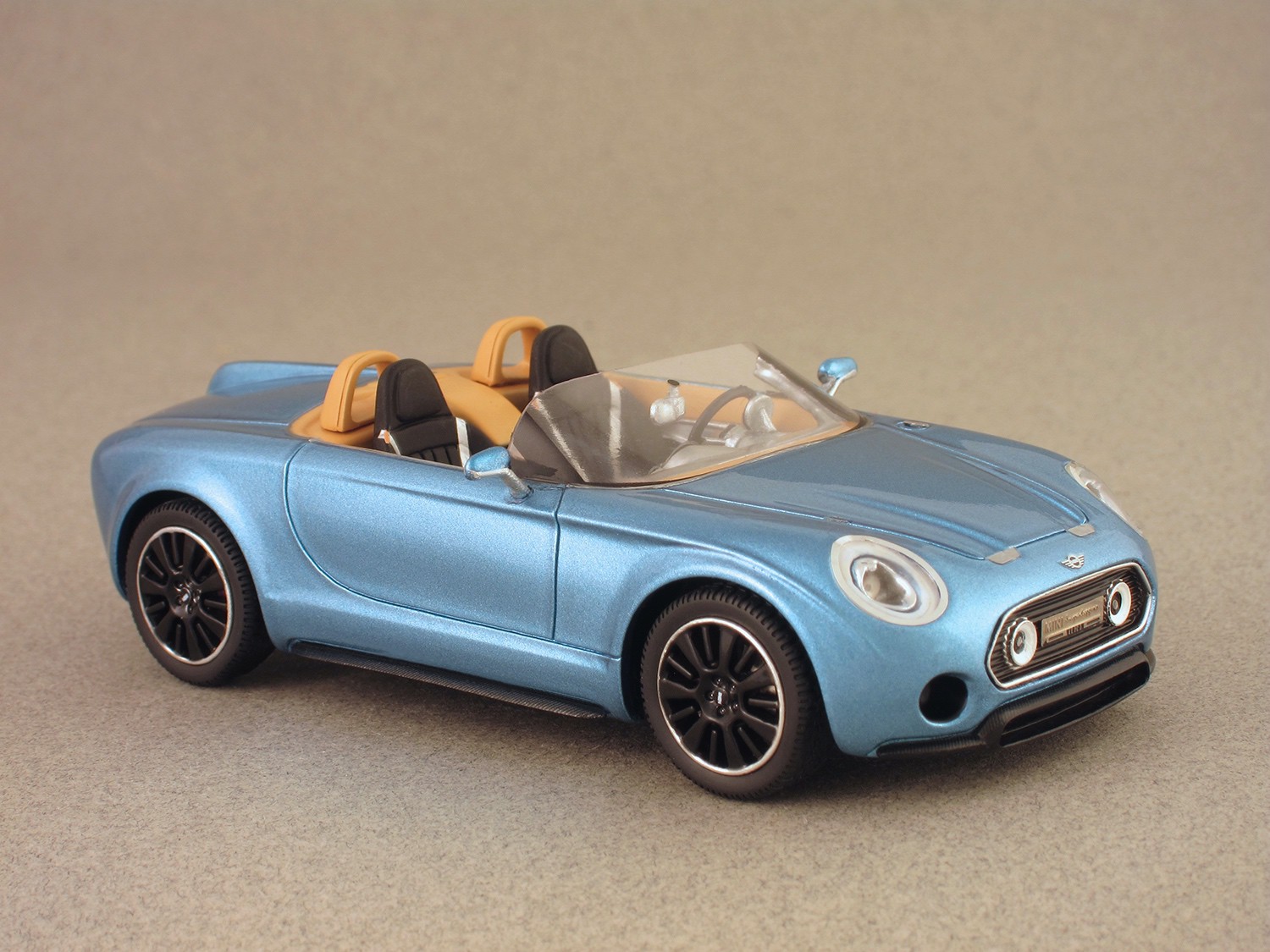
In stock
Mini Superleggera Touring (Premium X) 1:43
The coachbuilder Touring disappeared in 1966. But private investors re-launched the brand in 2006, and respect rather well the spirit of the original company. Touring, which designed the Alfa Romeo Disco Volante (reproduced by Matrix), also imagined this roadster based on the Mini. Unveiled at the 2014 Concorso d’Eleganza Villa d’Este, the Superleggera Vision is for now a concept car.
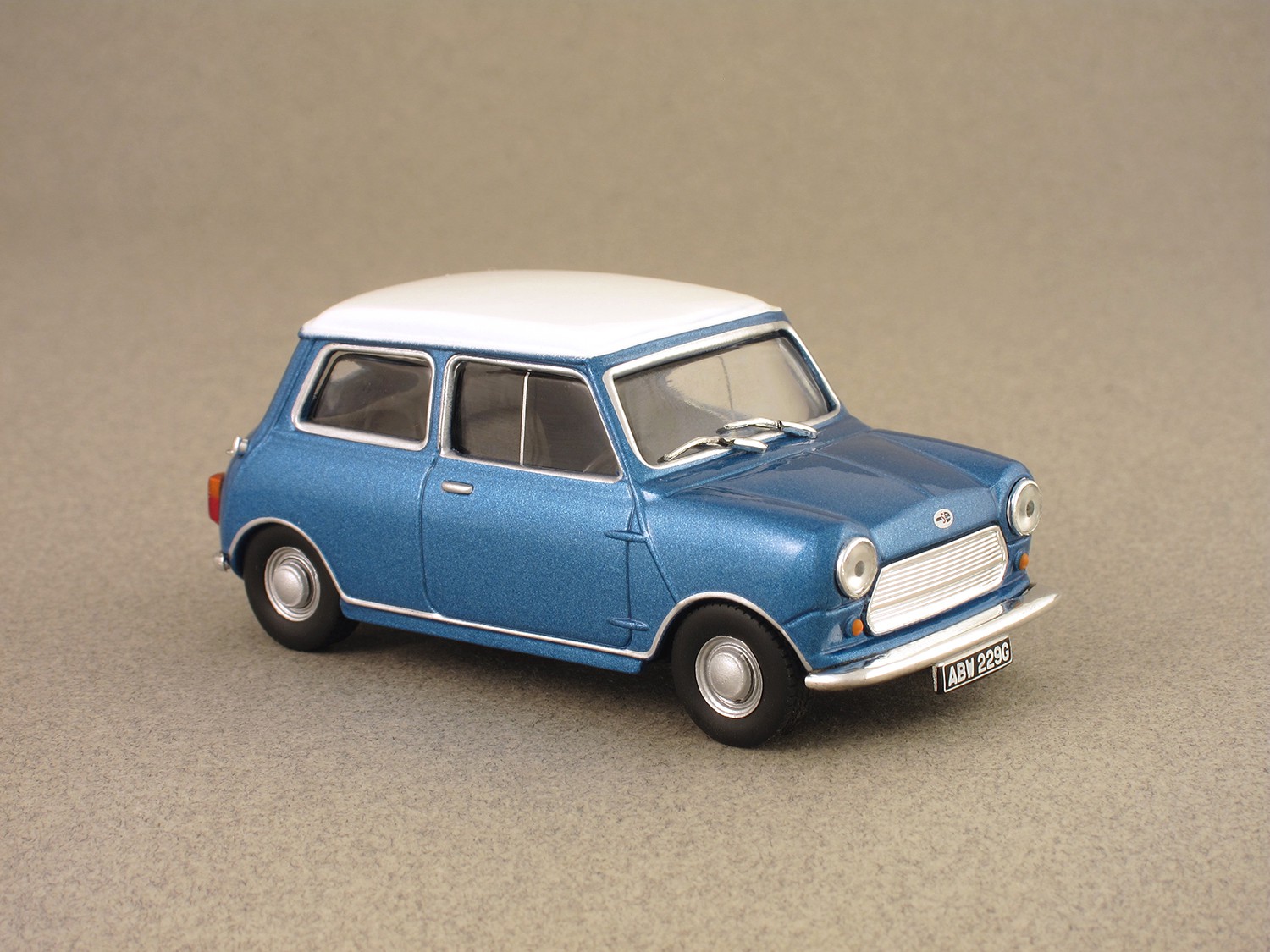
In stock
Morris Mini Cooper S 1967 (Solido) 1:43
Alec Issigonis, the designer of the Mini released in 1959, boosted its small car in 1961 thanks to his friend John Cooper, who increased the power from 34 to 55 hp. In 1963, this Cooper S, developing 70 hp, was launched. The front grille we can see here appeared in 1967 under the name Morris, one of the two brands that distributed the model with Austin, before Mini became a brand in 1969.
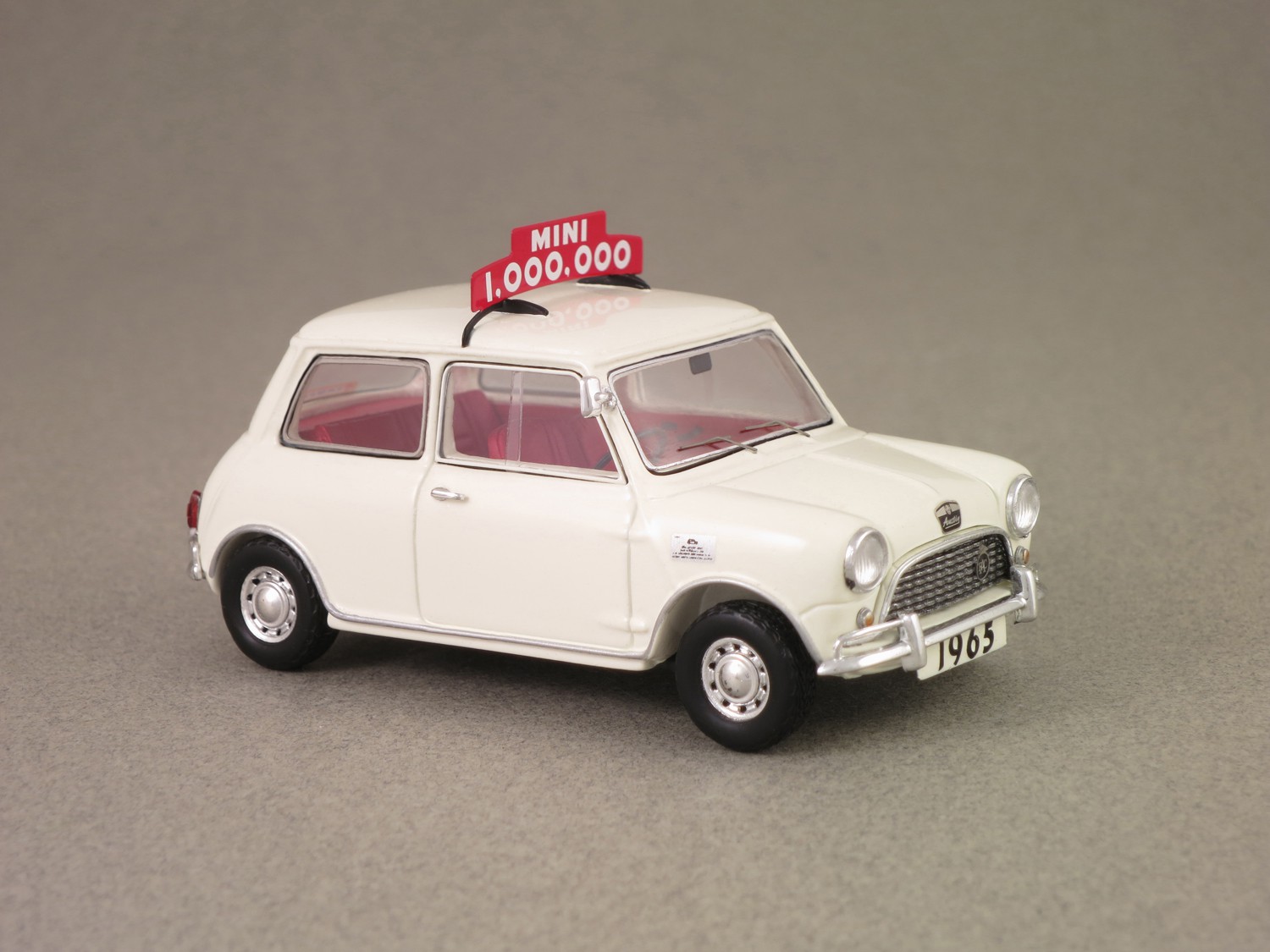
Mini 1 millionth (Spark) 1:43
In February 1965, this millionth Mini rolled out of the assembly line. Just after the 999,999th one, which was red, and before a blue one. The Mini, launched in 1959, revolutionized the world of small cars with its transverse engine, allowing to gain a lot of space. Up to 5.3 million units were produced until year 2000.
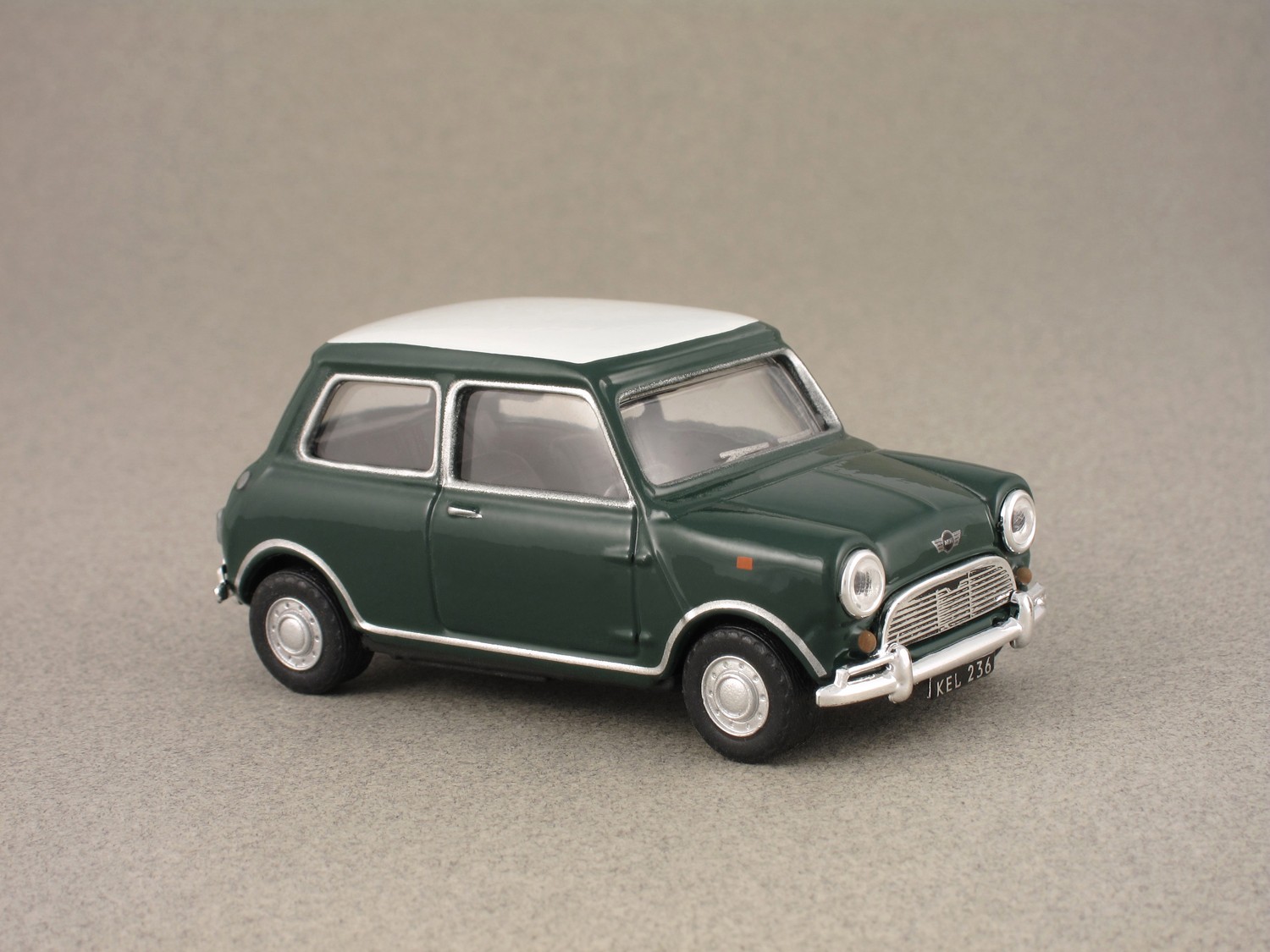
In stock
Mini Cooper green (Oliex) 1:43
With its engine fitted transversely, the 1959 Mini was a small revolution. In 1961, Alec Issigonis reinforced the historic role of its creation through the intervention of his friend John Cooper who offered a sports version to the Mini: the output increased from 34 to 55 hp. The first Cooper, here with a white roof, is recognizable thanks to its doubled bumpers on each side of the front.
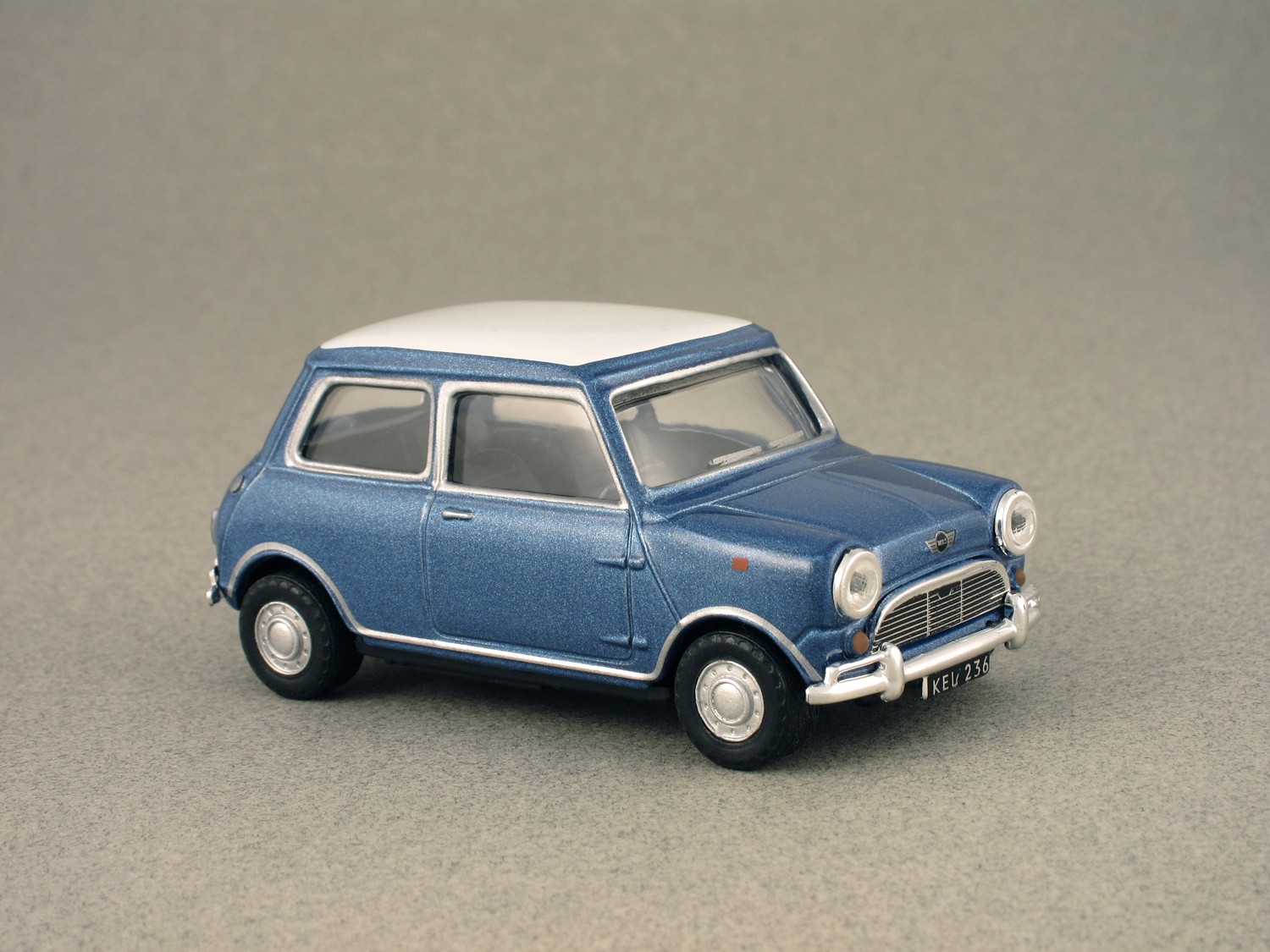
In stock
Mini Cooper blue (Cararama) 1:43
With its engine fitted transversely, the 1959 Mini was a small revolution. In 1961, Alec Issigonis reinforced the historic role of its creation through the intervention of his friend John Cooper who offered a sports version to the Mini: the output increased from 34 to 55 hp. The first Cooper, here with a white roof, is recognizable thanks to its doubled bumpers on each side of the front.
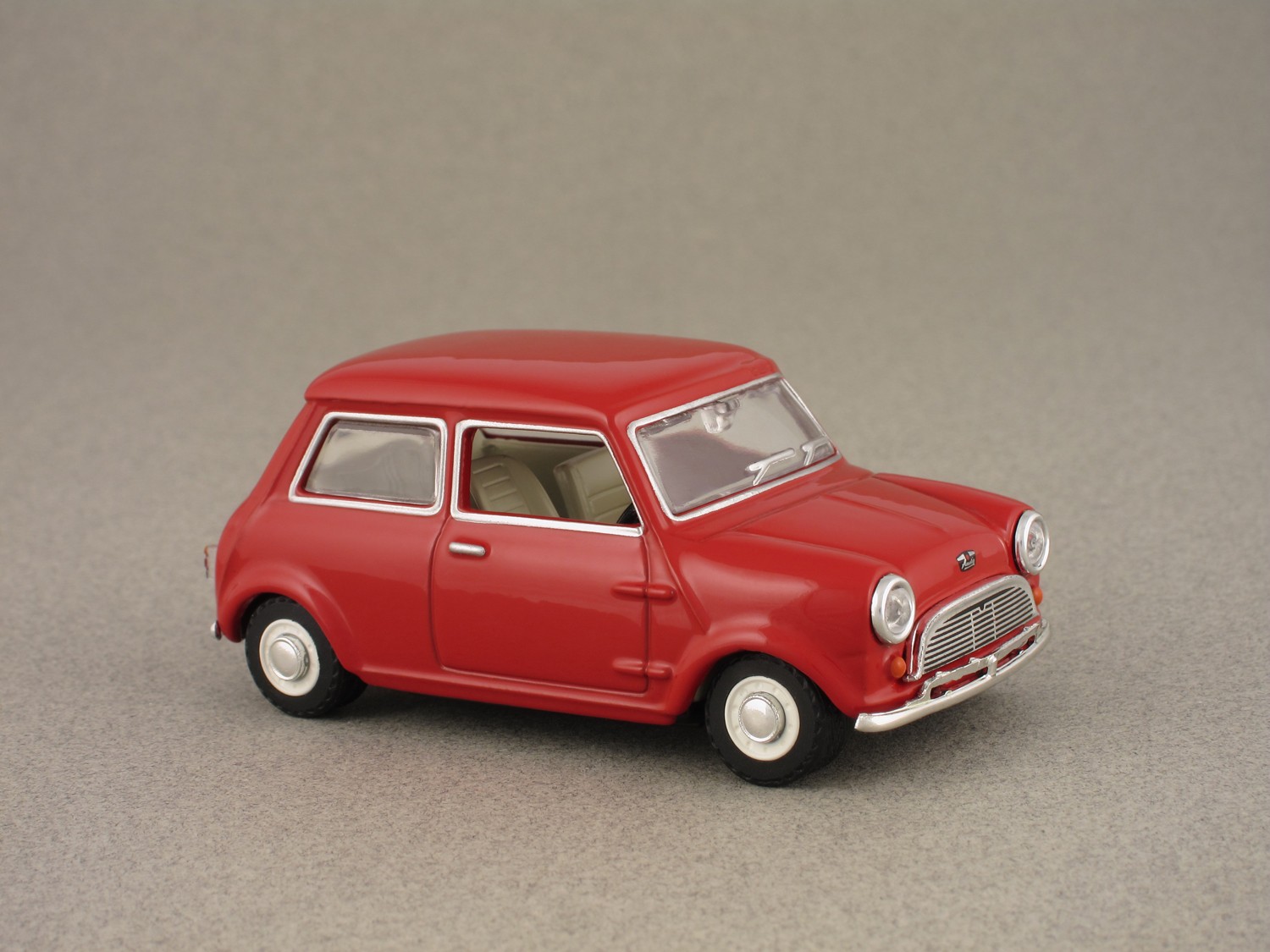
In stock
Austin Mini 1959 (Oxford) 1:43
We are here at the beginning of the career of the first, the "true" Mini. Morris and Austin (where it was called Seven) simultaneously released it. Designed by Alec Issigonis, this 3.05 meter/120 in.-long Mini was sensational. Its lines were absolutely cute, and the architecture of this front wheel-drive car was also very original: the engine was fitted transversely.
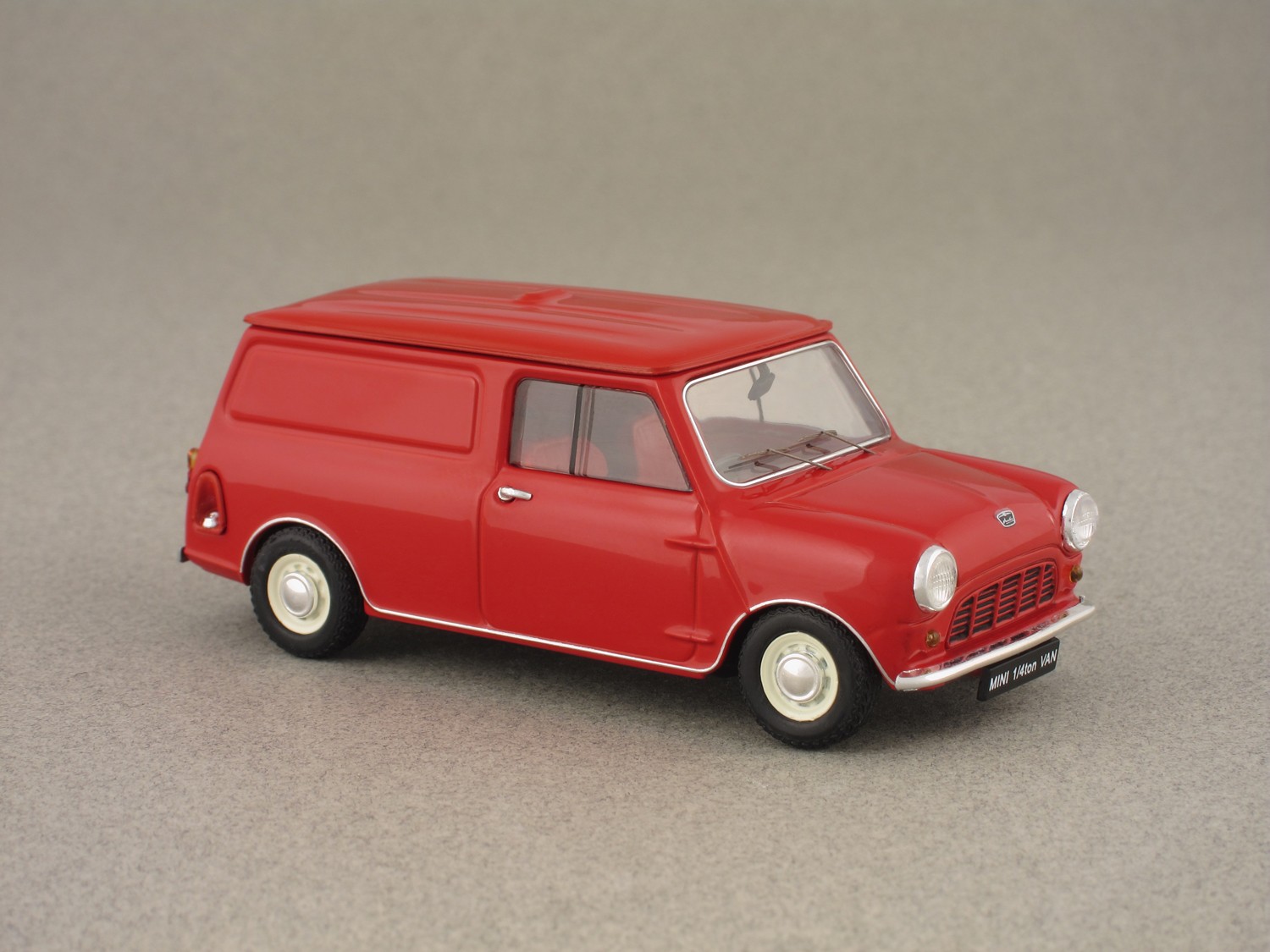
In stock
Austin Mini 1/4ton Van red (Ebbro) 1:43
The commercial version of the original 1959 Mini was launched in 1960. This small panel station wagon, based on a longer wheelbase, was called Van. The front grille was deprived of chrome. The payload was a quarter of a ton, and in 1978, Austin renamed this version Mini 95, referring to the gross laden weight (0.95 ton). However, people continued to call it Van.
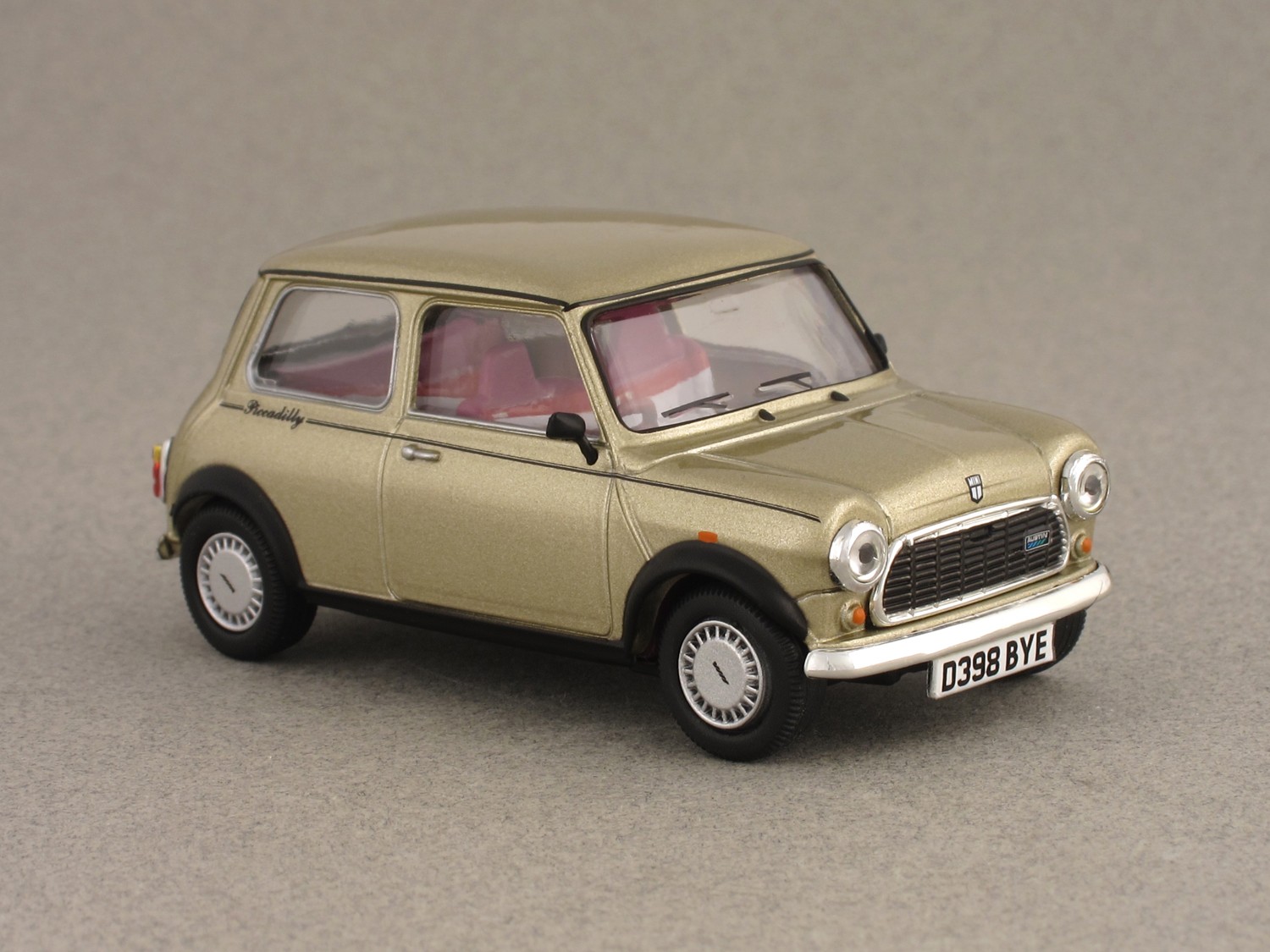
In stock
Mini Piccadilly 1986 (Vitesse) 1:43
In 1980, the Metro was supposed to succeed the Mini. But the latter resisted and even survived its alleged descendant. In 1986, the Mini was 27 years old and a limited series to 2,500 units called Piccadilly was launched. Its colour was "Cashmere Metallic Gold" and it was mainly intended for the UK, although it was also available in France and Japan.
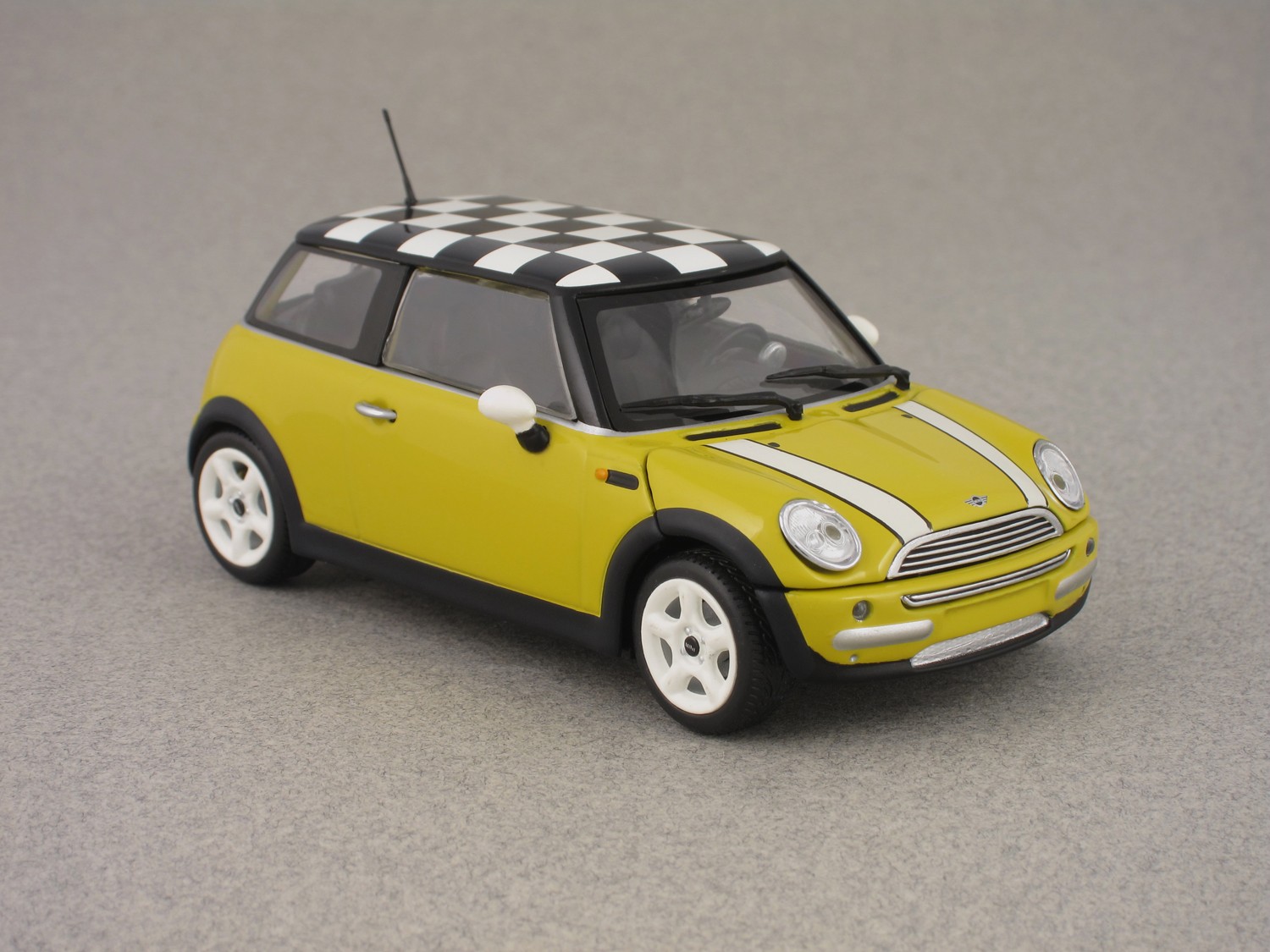
In stock
Mini One (Minichamps) 1:43
When BMW released the new Mini in 2001, the German group had probably no idea how successful this model would be. If the Cooper versions are the most popular, the basic version One provides access to the range for an almost reasonable price. Here we have a customised model, with white wheel rims and a chequered roof. The bonnet can open, which is rare on Minichamps miniature cars.




